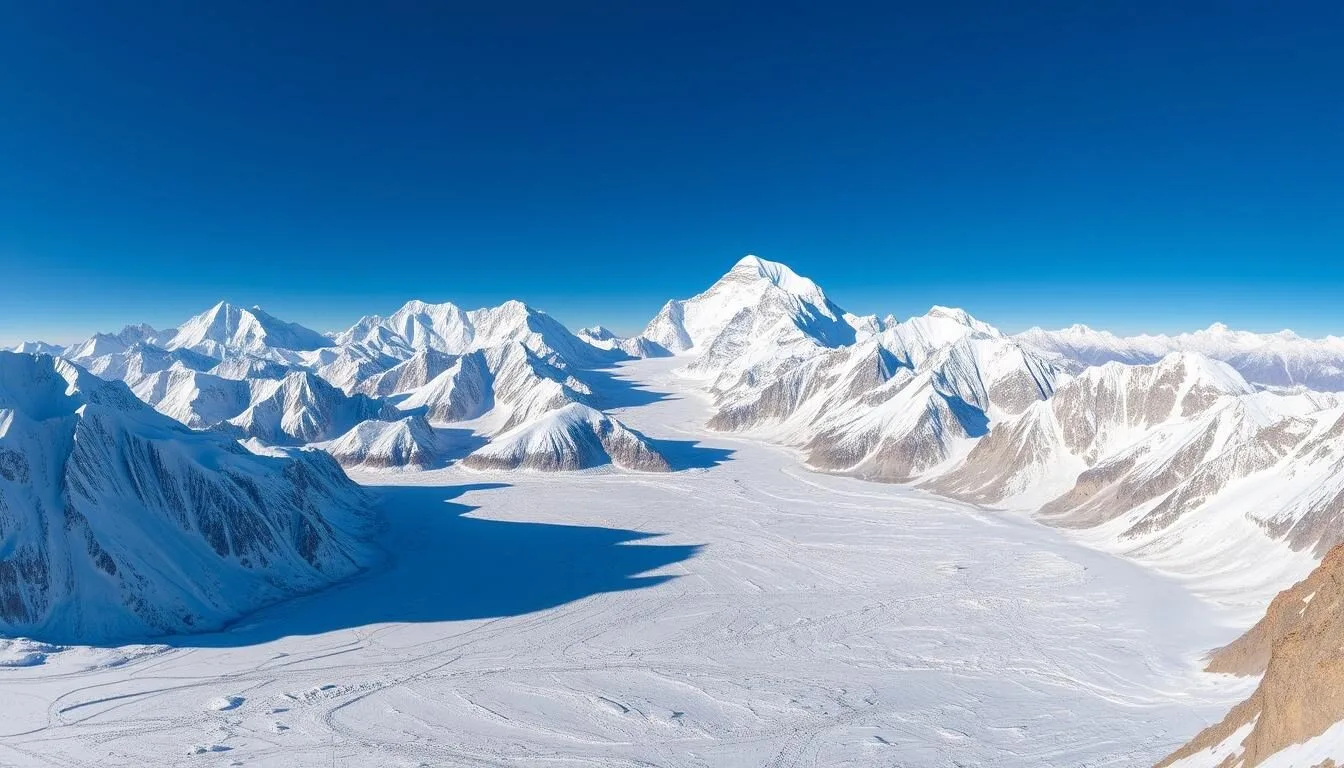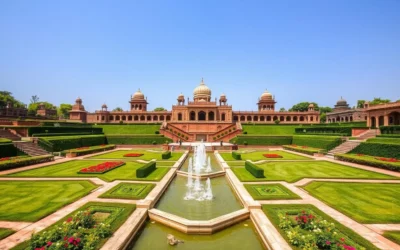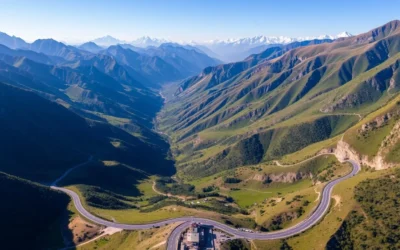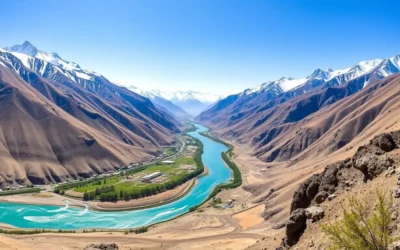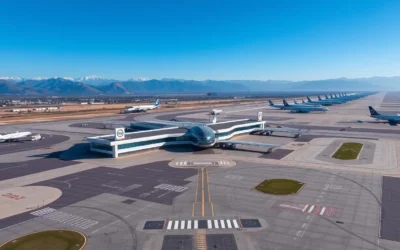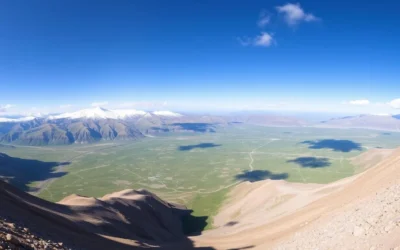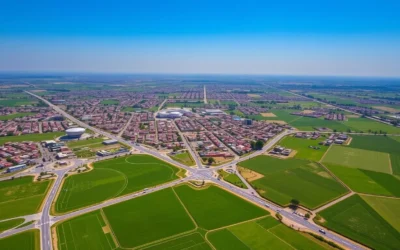✓ Accommodations✓ Flights✓ Rental Cars
Concordia in Pakistan hosts the highest concentration of 8,000+ meter peaks on Earth, with four of the world’s 14 eight-thousanders visible from a single vantage point—a phenomenon unmatched anywhere else on the planet. This glacial junction in the Karakoram Range, aptly nicknamed the “Throne Room of the Mountain Gods,” offers adventure seekers the rare opportunity to stand beneath K2, the world’s second-highest mountain, while surrounded by a panorama of towering giants that few humans will ever witness in person.
The breathtaking panorama at Concordia, with K2 visible in the distance
Getting to Concordia, Pakistan
Reaching Concordia requires careful planning and preparation, as it’s one of the most remote destinations in Pakistan. The journey itself is part of the adventure, taking you through stunning landscapes and traditional villages before arriving at this glacial wonderland.
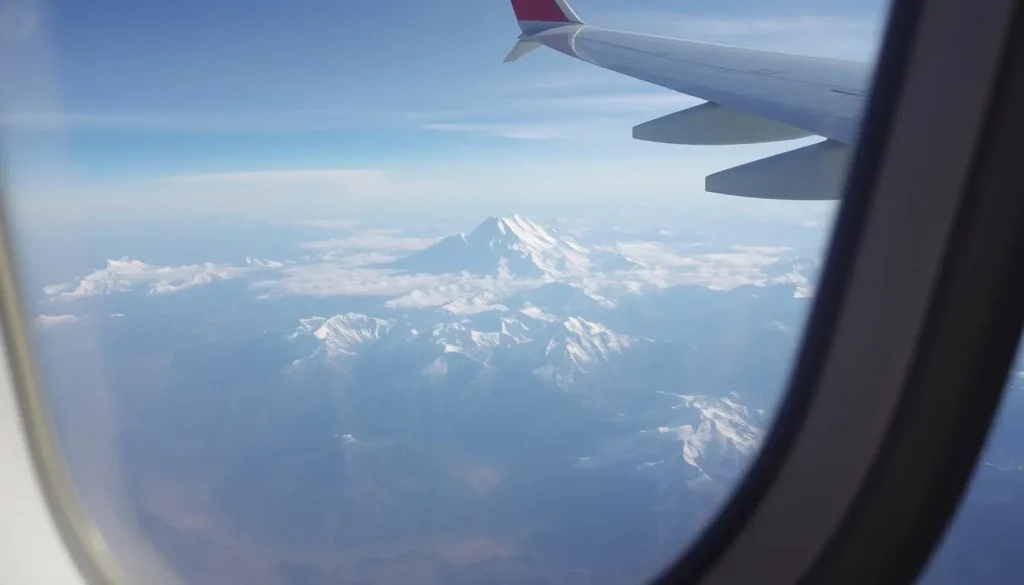
The spectacular flight from Islamabad to Skardu passes by Nanga Parbat
Step 1: International Flight to Islamabad
Your journey begins with an international flight to Islamabad, Pakistan’s capital city. Major airlines connect Islamabad with global hubs in the Middle East, Europe, and Asia. It’s recommended to arrive at least one day before your onward journey to acclimatize and complete any necessary permit formalities.
Step 2: Islamabad to Skardu
From Islamabad, you have two options to reach Skardu, the gateway to the Karakoram Range:
Option A: Domestic Flight (Recommended)
A 1-hour flight offers spectacular views of Nanga Parbat (the world’s ninth-highest peak) and, on clear days, even glimpses of K2 in the distance. Flights operate daily during summer months but are weather-dependent and can be canceled during poor visibility.
Ready to book your flight to Skardu? Find the best options here:
Option B: Overland Journey
The alternative is a 2-day drive along the legendary Karakoram Highway, covering approximately 700 km. While longer, this route offers breathtaking scenery through mountain passes and along the Indus River. Most tour operators include this as a backup plan if flights are canceled.
Step 3: Skardu to Askole
From Skardu, a 6-7 hour jeep ride takes you to Askole (3,000m), the last permanent settlement before the trek begins. The journey traverses the fertile Shigar Valley before following the Braldu River through an increasingly dramatic gorge. The road conditions can be challenging, especially after rain, but the scenery is spectacular.
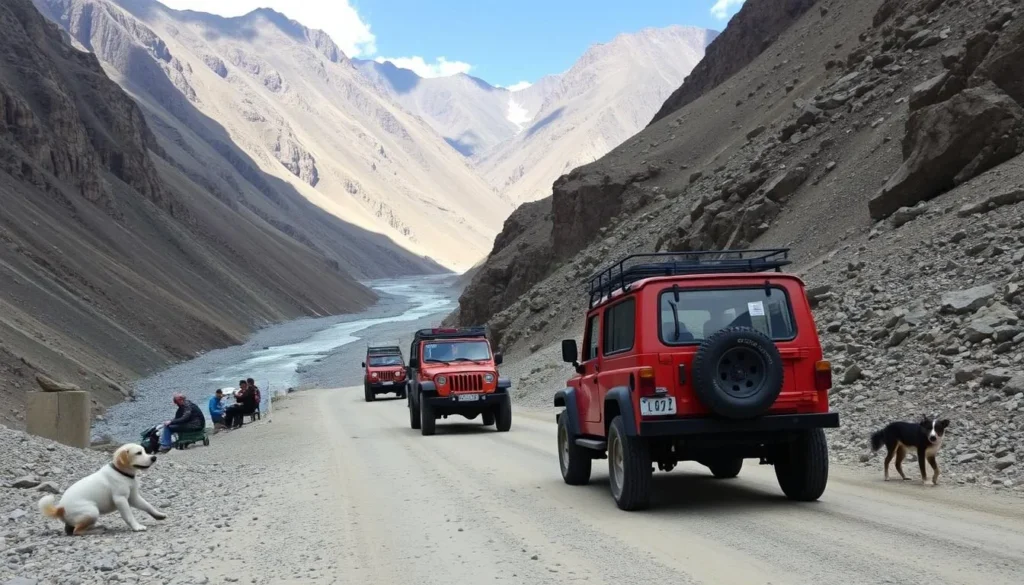
The rugged jeep track through Braldu Gorge en route to Askole
Step 4: Trekking to Concordia
From Askole, it’s an 8-10 day trek to reach Concordia. The trail follows the Baltoro Glacier, one of the longest glaciers outside the polar regions, passing through a series of camps including Jhola, Paiju, Khoburtse, Urdukas, and Goro before reaching Concordia at 4,500 meters (14,764 feet).
“The journey to Concordia is as magnificent as the destination itself. Each day brings new vistas, each more spectacular than the last, until you finally stand in the midst of the world’s most impressive mountain panorama.”
Planning Your Journey to Concordia
A successful trip to Concordia requires careful planning and preparation. This is not a destination for spontaneous travel—permits, guides, and proper equipment are all essential.
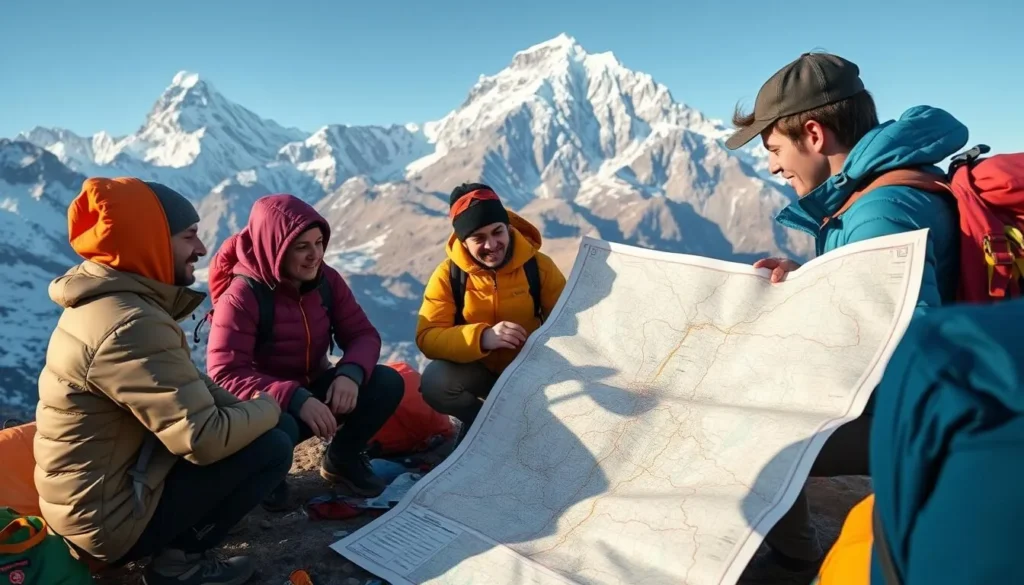
Proper planning is essential for a successful journey to Concordia
Required Permits
Concordia is located in a restricted area, and several permits are required:
- Trekking Permit from the Ministry of Tourism
- Restricted Area Permit for the Baltoro region
- Central Karakoram National Park Fee
- Environmental Protection Fee
Most tour operators handle these permits as part of their package. If arranging independently, you’ll need to apply at least 2-3 months in advance through the Ministry of Tourism in Islamabad.
Guided vs. Independent Trekking
Due to the remote nature, challenging terrain, and permit requirements, independent trekking to Concordia is not recommended and is practically impossible for foreign visitors. All treks must be arranged through licensed Pakistani tour operators who provide:
- Experienced guides familiar with the route and conditions
- Porter support for equipment and supplies
- Camp setup and meals
- Emergency communication and evacuation protocols
- Permit processing and logistics
Ready for the Adventure of a Lifetime?
Find comfortable accommodations in Islamabad and Skardu to prepare for your trek:
Cost Considerations
A trek to Concordia is a significant investment. Typical costs include:
| Expense Category | Approximate Cost (USD) | Notes |
| Guided Trek Package | $2,700 – $4,500 | Includes guide, porters, meals, camping equipment, permits |
| International Flights | $800 – $1,500 | Varies by departure location and season |
| Domestic Flight (Islamabad-Skardu) | $150 – $200 | Round trip |
| Hotels (Pre/Post Trek) | $300 – $600 | 5-6 nights total in Islamabad and Skardu |
| Personal Equipment | $500 – $1,500 | Depends on what you already own |
| Travel Insurance | $150 – $300 | Must include high-altitude trekking and helicopter evacuation |
When to Visit Concordia
The trekking season to Concordia is limited by weather conditions in the high mountains. Choosing the right time to visit is crucial for safety and to maximize your chances of clear views.
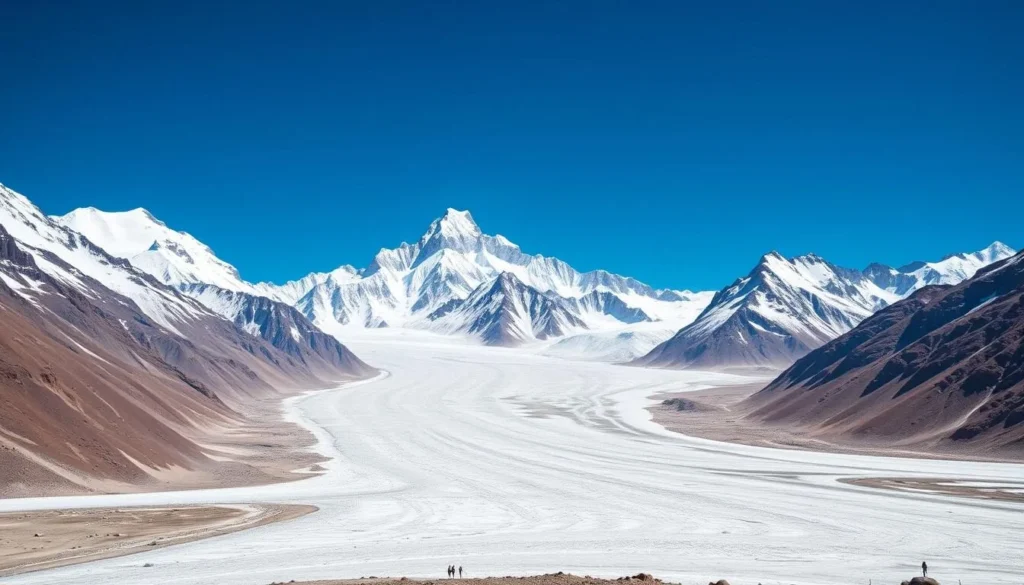
Summer offers the best conditions for trekking to Concordia
Optimal Trekking Season
The best time to trek to Concordia is from June to September, with July and August being ideal. During these months, you can expect:
Advantages of Summer Trekking
- More stable weather patterns
- Higher chances of clear views of K2 and surrounding peaks
- Warmer temperatures (though still cold at night)
- All routes and passes are typically open
- Regular flight operations between Islamabad and Skardu
Challenges to Consider
- Peak season means more trekkers on the route
- Higher prices for guides and services
- Need to book well in advance
- Possible monsoon effects in lower elevations
- Glacial melt can make stream crossings more challenging
Weather Conditions by Elevation
Weather varies dramatically by elevation on the trek to Concordia:
| Elevation Zone | Daytime Temperature | Nighttime Temperature | Weather Characteristics |
| Islamabad (500m) | 30-40°C (86-104°F) | 20-25°C (68-77°F) | Hot and humid, possible monsoon rains |
| Skardu (2,500m) | 20-30°C (68-86°F) | 10-15°C (50-59°F) | Warm days, cool nights, low humidity |
| Askole-Paiju (3,000-3,500m) | 15-25°C (59-77°F) | 5-10°C (41-50°F) | Hot in direct sun, cool in shade, dusty |
| Urdukas-Goro (3,500-4,300m) | 10-20°C (50-68°F) | 0-5°C (32-41°F) | Cool days, cold nights, possible precipitation |
| Concordia (4,500m) | 5-15°C (41-59°F) | -5 to -10°C (14-23°F) | Cold, windy, possible snow even in summer |
| K2 Base Camp (5,150m) | 0-10°C (32-50°F) | -10 to -15°C (5-14°F) | Very cold, high UV exposure, snow possible |
Weather Tip: Mountain weather is notoriously unpredictable. Even during the optimal season, be prepared for sudden changes including snowfall at higher elevations. Always pack layers and waterproof gear regardless of the forecast.
Typical Concordia Trek Itinerary
The journey to Concordia typically takes 18-20 days in total, including travel days to and from Pakistan. Below is a standard itinerary that most trekking companies follow, though slight variations exist.
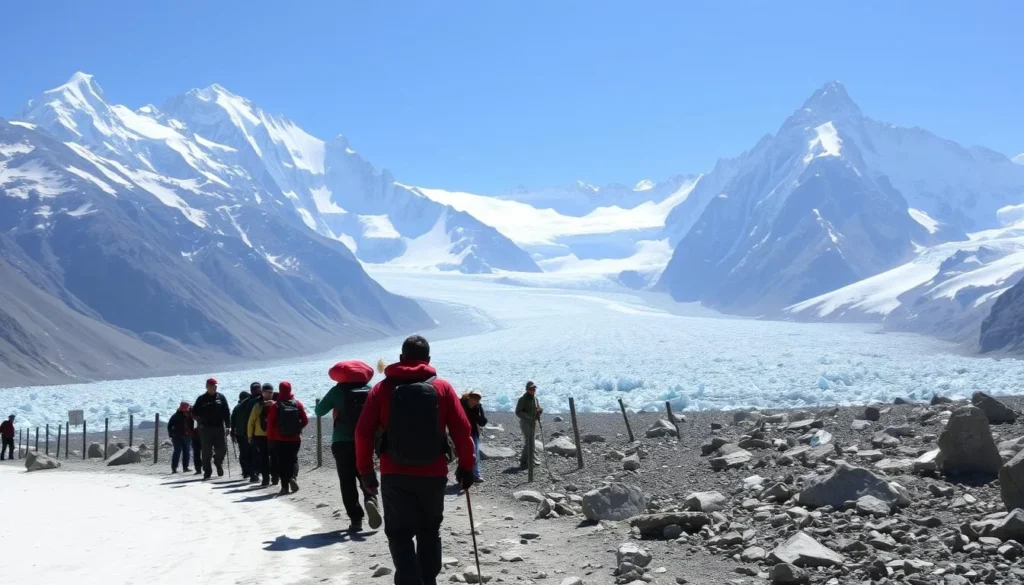
Trekkers making their way along the Baltoro Glacier toward Concordia
- Day 1: Arrive in Islamabad. Complete permit formalities and briefing.
- Day 2: Fly from Islamabad to Skardu (weather permitting). Overnight in Skardu.
- Day 3: Preparation day in Skardu. Equipment check and local sightseeing.
- Day 4: Drive from Skardu to Askole/Jhola (6-7 hours). Begin camping.
- Day 5: Trek from Jhola to Paiju (21km, 6-7 hours). First views of the Baltoro Glacier.
- Day 6: Rest and acclimatization day at Paiju (3,450m).
- Day 7: Trek from Paiju to Khoburtse (15km, 6-8 hours). First day on the glacier.
- Day 8: Trek from Khoburtse to Urdukas (6km, 3-4 hours). Views of Trango Towers.
- Day 9: Trek from Urdukas to Goro II (12km, 6-7 hours). Views of Masherbrum.
- Day 10: Trek from Goro II to Concordia (12km, 5-6 hours). First views of K2.
- Day 11: Day trip to K2 Base Camp or Broad Peak Base Camp (optional).
- Day 12: Rest day at Concordia to enjoy the panorama.
- Day 13: Begin return trek: Concordia to Goro II (12km, 4-5 hours).
- Day 14: Trek from Goro II to Urdukas (12km, 5-6 hours).
- Day 15: Trek from Urdukas to Paiju (21km, 7-8 hours).
- Day 16: Trek from Paiju to Jhola (21km, 6-7 hours).
- Day 17: Drive from Jhola to Skardu (6-7 hours).
- Day 18: Fly from Skardu to Islamabad (or begin 2-day drive if flights canceled).
- Day 19: Contingency day in Islamabad or continue drive from Chilas.
- Day 20: International departure from Islamabad.
Ready to Experience This Epic Journey?
Find guided tours to Concordia and K2 Base Camp:
Explore Guided Tours
Top Things to Do in Concordia, Pakistan
While reaching Concordia itself is the primary achievement, there are several activities and experiences that make this journey truly unforgettable. Here are the top things to do once you’ve reached this magnificent location.
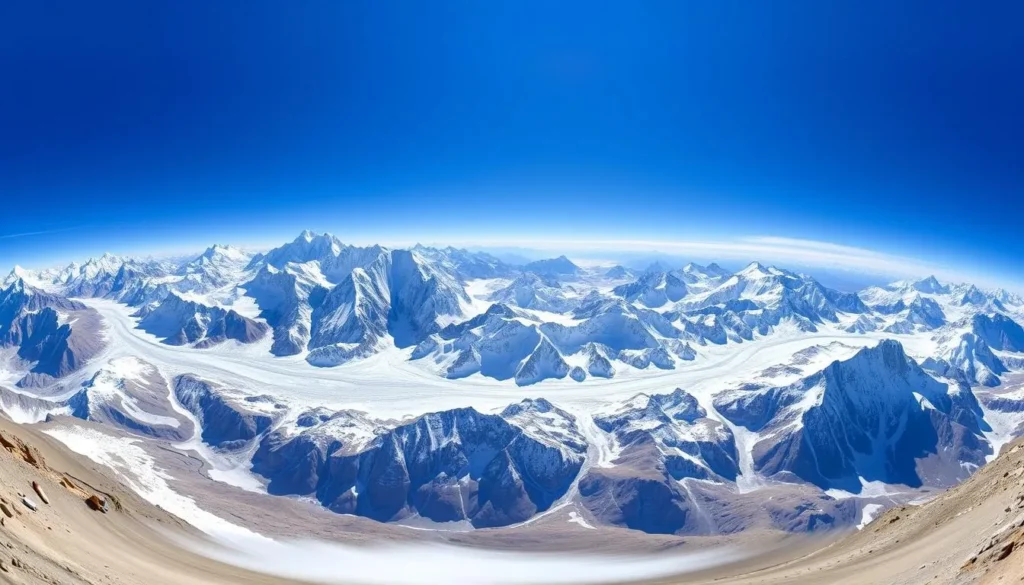
The unparalleled 360-degree mountain panorama from Concordia
1. Marvel at the K2 Panorama
The main attraction at Concordia is simply taking in the incredible mountain panorama. From this single location, you can see:
- K2 (8,611m) – The world’s second-highest mountain
- Broad Peak (8,047m) – The 12th highest mountain
- Gasherbrum I (8,080m) – The 11th highest mountain
- Gasherbrum II (8,035m) – The 13th highest mountain
- Gasherbrum IV (7,925m) – Though not an eight-thousander, its dramatic profile makes it a photographer’s favorite
- Mitre Peak (6,010m) – Distinctive pyramid-shaped mountain
- Chogolisa (7,665m) – Known as “Bride Peak” for its elegant snow-covered slopes
The best times for viewing are early morning and late afternoon when the light creates dramatic shadows and colors on the mountains. Spend time simply absorbing this once-in-a-lifetime panorama.
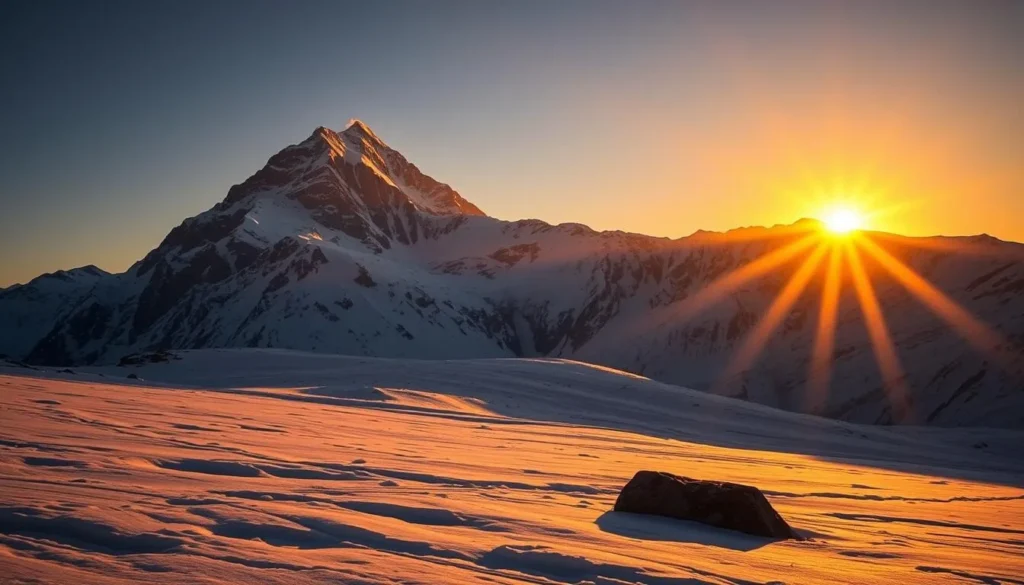
Sunrise at Concordia with golden light illuminating K2
2. Trek to K2 Base Camp
For many trekkers, the highlight of their Concordia journey is continuing to K2 Base Camp. This side trip takes a full day (8-10 hours round trip) from Concordia and involves:
- Crossing the challenging junction of the Baltoro and Godwin-Austen glaciers
- Trekking approximately 12km round trip on difficult glacial terrain
- Gaining an additional 650m in elevation (Concordia is at 4,500m; K2 Base Camp is at 5,150m)
- Navigating around crevasses and glacial streams
The reward is standing at the foot of K2’s immense south face, where climbers begin their ascent of this formidable peak. You’ll also visit the Gilkey Memorial, which commemorates climbers who have lost their lives on K2.
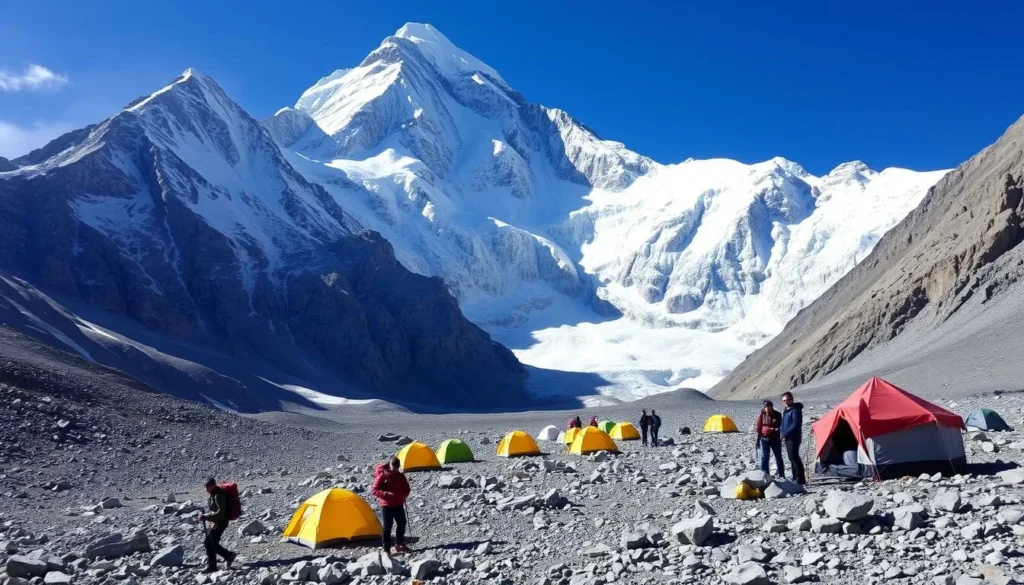
Trekkers at K2 Base Camp with the massive south face of K2 towering above
K2 Base Camp Tip: Many trekkers find it beneficial to spend a night at Broad Peak Base Camp (4,850m) before attempting K2 Base Camp. This provides better acclimatization and splits the journey into more manageable segments.
3. Visit Broad Peak Base Camp
A less strenuous alternative to K2 Base Camp is trekking to Broad Peak Base Camp, which is about halfway between Concordia and K2 Base Camp. This 3-4 hour round trip offers:
- Excellent views of K2 from a different angle
- A closer look at Broad Peak’s impressive south face
- Less challenging terrain than the full journey to K2 Base Camp
- Opportunity to meet climbing expeditions during the summer season
Many trekkers find that the views of K2 from Broad Peak Base Camp are actually more photogenic than those from K2 Base Camp itself, as you can capture the entire mountain in frame.
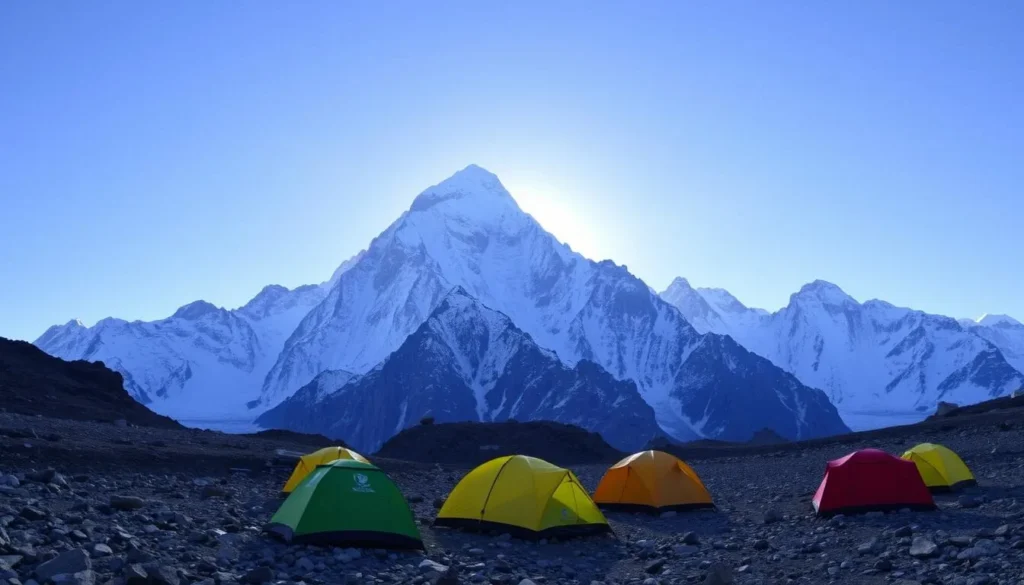
The spectacular view of K2 from Broad Peak Base Camp
4. Photograph the Throne Room of the Mountain Gods
Concordia offers unparalleled photography opportunities. Key photo spots include:
- Concordia Main Viewpoint – The classic panorama capturing multiple 8,000m peaks
- Sunset Ridge – A small moraine ridge west of camp offering perfect sunset views of K2
- Godwin-Austen Glacier View – Looking up the glacier toward K2 with Broad Peak to the right
- Mitre Peak Framing – Using the distinctive shape of Mitre Peak to frame K2 in the background
Photography tips for Concordia:
- Bring extra batteries as cold temperatures drain them quickly
- Use UV filters to combat the intense high-altitude sunlight
- Wake early for the golden light on K2 and surrounding peaks
- Include human elements to convey the massive scale of the landscape
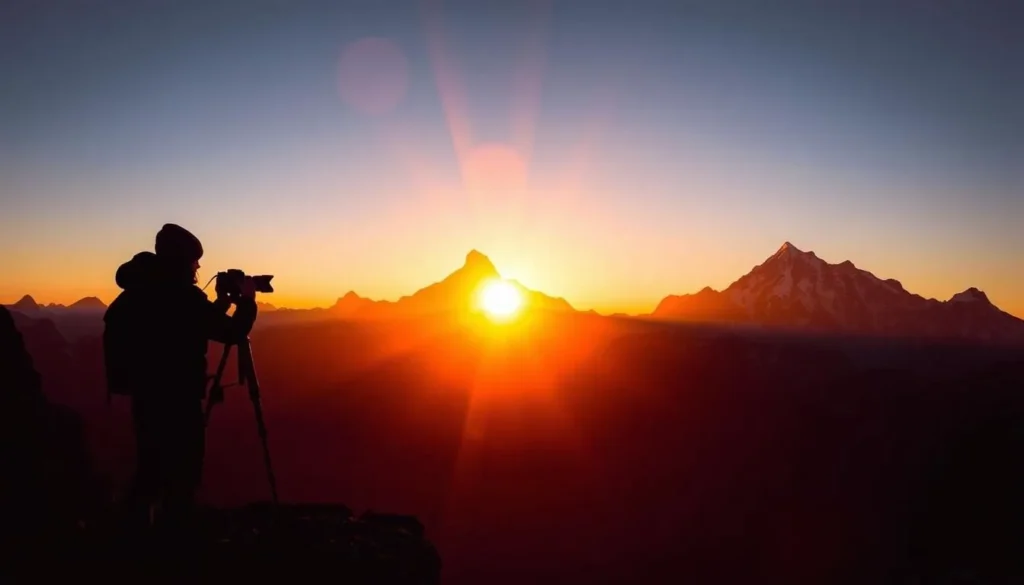
Capturing the magical sunset light on K2 from Concordia
5. Experience Life on the Baltoro Glacier
Spending time at Concordia means living on one of the world’s largest glaciers outside the polar regions. Take time to appreciate this unique environment:
- Listen to the glacier’s constant movement—creaking, groaning, and occasional thunderous cracks
- Observe the ever-changing ice formations, seracs, and meltwater streams
- Watch for rockfalls from the surrounding peaks
- Experience the unique sensation of sleeping on moving ice (your tent will shift slightly overnight)
- Witness the dramatic color changes of the mountains throughout the day
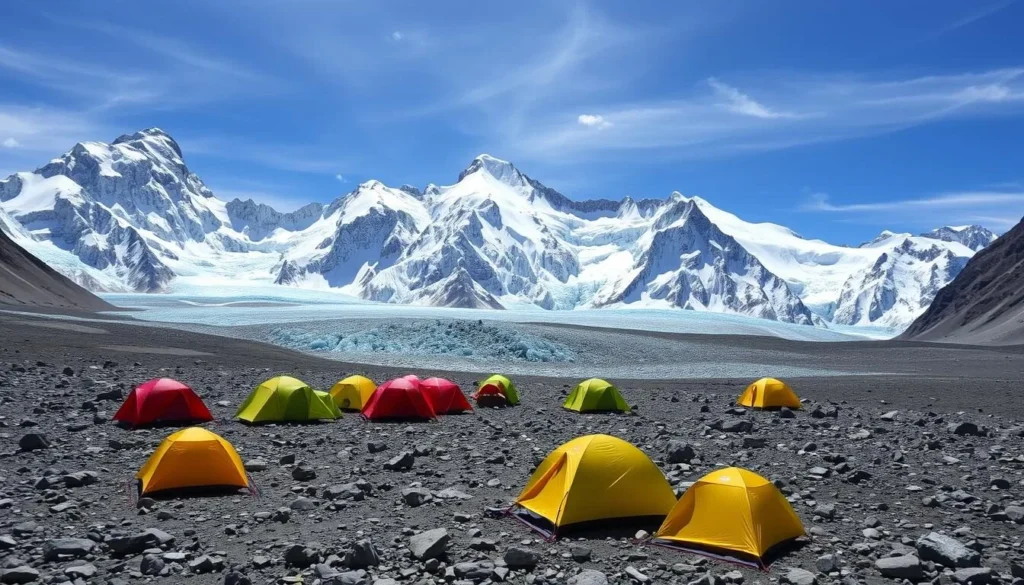
Camping on the Baltoro Glacier at Concordia with K2 in the background
Ready for This Once-in-a-Lifetime Adventure?
Start planning your journey to Concordia today:
6. Meet International Climbers and Expeditions
During the summer climbing season (June-August), Concordia and the surrounding base camps become a temporary international village of climbers attempting K2, Broad Peak, and the Gasherbrums. This offers a unique opportunity to:
- Meet world-class mountaineers from around the globe
- Learn about high-altitude climbing expeditions
- Witness the logistics and preparation involved in 8,000m peak attempts
- Share stories and experiences with like-minded adventurers
Many expeditions welcome respectful visitors, though always ask permission before entering their camp areas and be mindful that they are focused on serious climbing objectives.
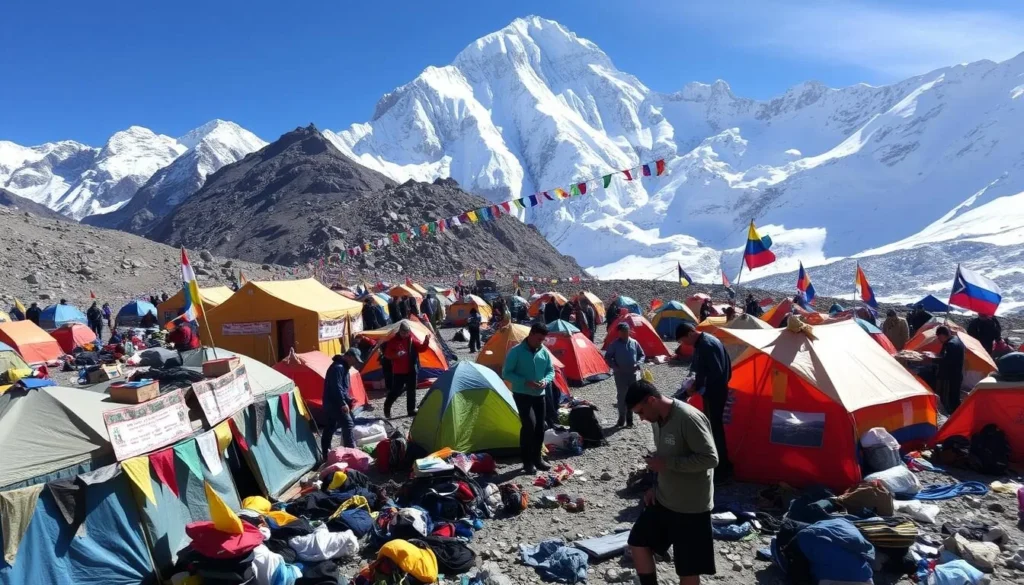
International climbing expeditions at K2 Base Camp during the summer season
7. Observe Unique High-Altitude Wildlife
Despite the harsh environment, the Concordia region is home to some remarkable wildlife adapted to extreme conditions:
- Snow Leopard – Extremely rare, but the area is within their territory
- Ibex – Mountain goats that can sometimes be spotted on surrounding slopes
- Golden Eagle – Occasionally seen soaring above the glaciers
- Himalayan Snowcock – A large game bird adapted to high altitudes
- Lammergeier (Bearded Vulture) – Massive birds with wingspans up to 3 meters
While wildlife sightings are not guaranteed, keep your camera ready and scan the slopes and skies regularly.
Practical Tips for Concordia Trek
Preparing properly for the Concordia trek can make the difference between a challenging but rewarding experience and a miserable one. Here are essential practical tips to help you prepare.
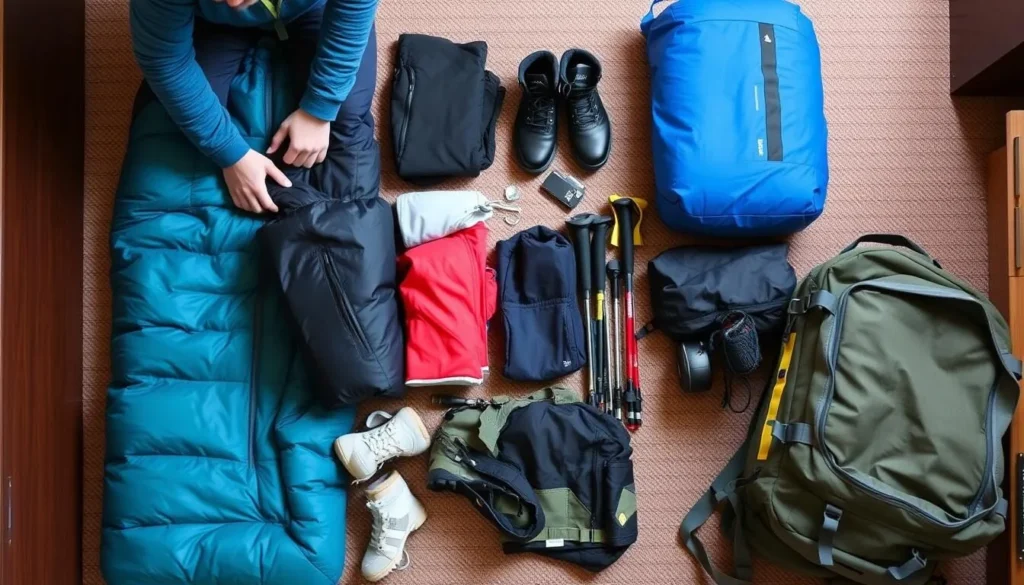
Proper preparation and packing is essential for the Concordia trek
Essential Gear
The right equipment is crucial for comfort and safety. Key items include:
Clothing
- High-quality waterproof hiking boots (well broken-in)
- Down jacket (rated to at least -10°C/14°F)
- Waterproof/windproof outer shell (jacket and pants)
- Thermal base layers (tops and bottoms)
- Mid-layers for insulation (fleece or lightweight down)
- Hiking pants (quick-dry material)
- Warm hat, sun hat, and gloves
- Multiple pairs of hiking socks
- Gaiters (for snow and scree)
Equipment
- Sleeping bag (rated to at least -10°C/14°F)
- Sleeping pad (insulated for glacier camping)
- Trekking poles (highly recommended for glacier travel)
- Headlamp with extra batteries
- Sunglasses with high UV protection
- Water bottles (2 x 1 liter) and water purification
- Daypack (30-40 liters) for daily trekking
- Duffel bag (80-90 liters) for porters to carry
- Camera with extra batteries
Packing Tip: Your main duffel bag carried by porters should not exceed 15kg (33lbs). Anything beyond this weight may incur additional porter fees. Pack smartly and bring only what you truly need.
Health and Safety
The remote location and high altitude present specific health challenges:
Altitude Sickness Prevention
Altitude-related illness is the most common health issue on the Concordia trek:
- Follow the prescribed itinerary with proper acclimatization days
- Stay well-hydrated (4-5 liters daily)
- Ascend slowly (“climb high, sleep low” principle)
- Consider preventative medication like Diamox (consult your doctor)
- Recognize symptoms: headache, nausea, dizziness, fatigue, loss of appetite
- If symptoms persist, descend immediately
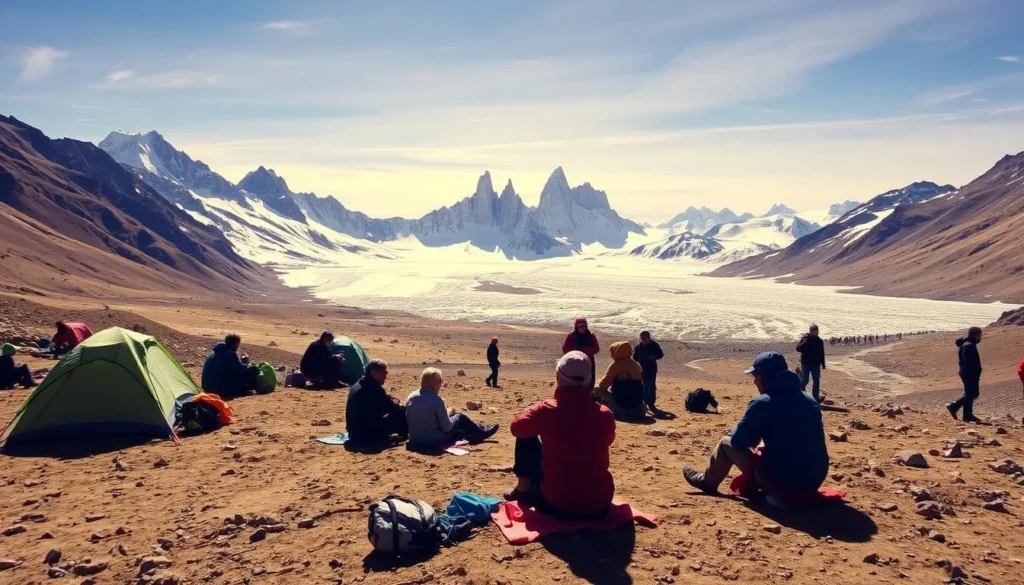
Taking proper rest days for acclimatization is essential on the trek to Concordia
Medical Kit
Bring a comprehensive personal medical kit including:
- Prescription medications (including altitude medication if prescribed)
- Pain relievers (ibuprofen, acetaminophen)
- Antibiotics for traveler’s diarrhea (prescribed by your doctor)
- Blister treatment and bandages
- Rehydration salts
- Cold and flu medication
- Antiseptic cream
- Sunscreen (SPF 50+) and lip balm with SPF
- Hand sanitizer and wet wipes
Insurance
Comprehensive travel insurance is absolutely essential and should include:
- High-altitude trekking coverage (up to at least 5,500m)
- Helicopter evacuation and rescue
- Medical evacuation to your home country
- Coverage for Pakistan specifically
- Trip cancellation and interruption
Verify all details with your insurance provider, as many standard travel policies exclude high-altitude activities or have altitude limitations.
Need Transportation in Pakistan?
Arrange your rental car for city exploration before and after your trek:
Communication and Connectivity
Staying connected during the trek is challenging but possible:
- Mobile Coverage: Available in Islamabad and Skardu, but virtually non-existent on the trek
- Satellite Phones: Most tour operators carry satellite phones for emergencies
- Satellite Communicators: Devices like Garmin inReach allow text messaging and SOS signals
- Solar Chargers: Essential for keeping devices powered during the trek
Inform family and friends before departing that you’ll be out of regular contact for 10-14 days during the trek portion of your journey.
Money and Expenses
Financial considerations for your Concordia journey:
- Pakistani Rupee (PKR) is the local currency
- ATMs are available in Islamabad and Skardu but not beyond
- Bring USD cash for emergencies and tips
- Budget approximately $200-300 for tips (guides, porters, cooks)
- Carry small denominations for purchases in villages
Most trek packages are all-inclusive once you begin trekking, but budget for meals and accommodations in Islamabad and Skardu, plus any souvenirs or personal expenses.
Cultural Etiquette and Local Interactions
Pakistan is known for its extraordinary hospitality, and the Balti people of the Karakoram region are particularly welcoming to visitors. Understanding and respecting local customs will enhance your experience.
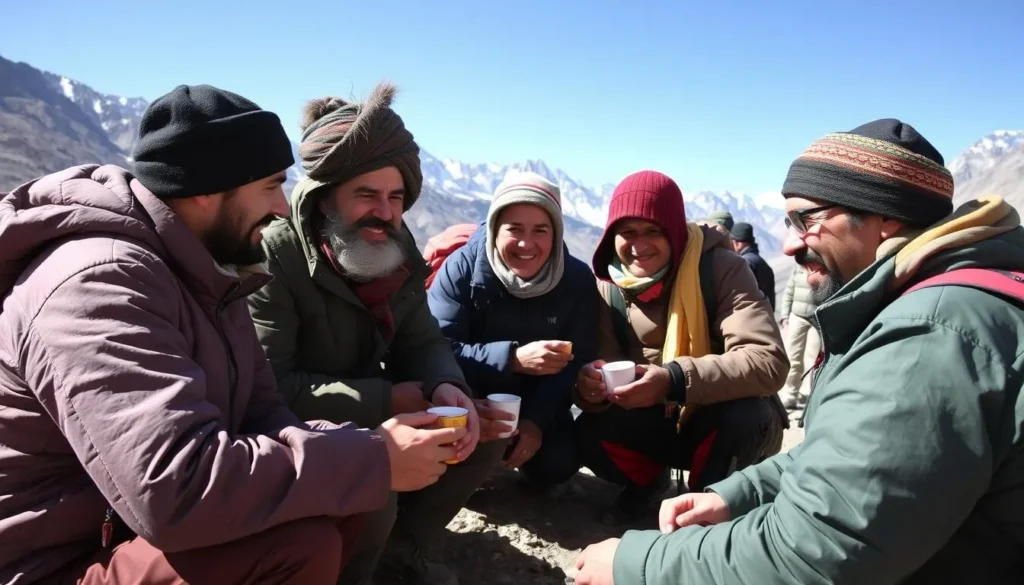
Positive interactions with local Balti guides and porters enrich the trekking experience
Respecting Local Customs
Key cultural considerations include:
- Dress Modestly: While trekking attire is acceptable on the trail, in villages and cities, both men and women should cover shoulders and knees
- Religious Sensitivity: Pakistan is an Islamic country; respect prayer times and religious practices
- Photography: Always ask permission before photographing local people
- Greetings: Learn basic Urdu or Balti greetings; a simple “Salam Alaikum” (Peace be upon you) is universally appreciated
- Gender Considerations: Some conservative areas maintain separation between men and women; follow your guide’s advice
Working with Porters and Local Staff
Your trek will be supported by a team of local staff including guides, porters, and cooks:
- Treat all staff with respect and courtesy
- Understand that porters carry heavy loads (up to 25kg) in challenging conditions
- Don’t ask porters to carry additional items during the day
- Respect their prayer times and religious practices
- Learn a few words in their language (usually Balti or Urdu)
- Consider bringing small gifts like quality gloves or headlamps
“The relationship between trekkers and their local support team is at the heart of a successful Concordia journey. These skilled professionals not only make the trek possible but also provide invaluable cultural insights and friendship.”
Tipping Guidelines
Tipping is an important part of the trekking economy and should be budgeted for:
| Role | Recommended Tip (per person) | Notes |
| Lead Guide/Sirdar | $80-100 | For the entire trek |
| Assistant Guide | $50-70 | For the entire trek |
| Cook | $50-70 | For the entire trek |
| Porters | $50-70 | To be divided among all porters |
Tips are typically collected by the lead trekker or guide and presented to the team at the end of the trek, often during a small ceremony or celebration.
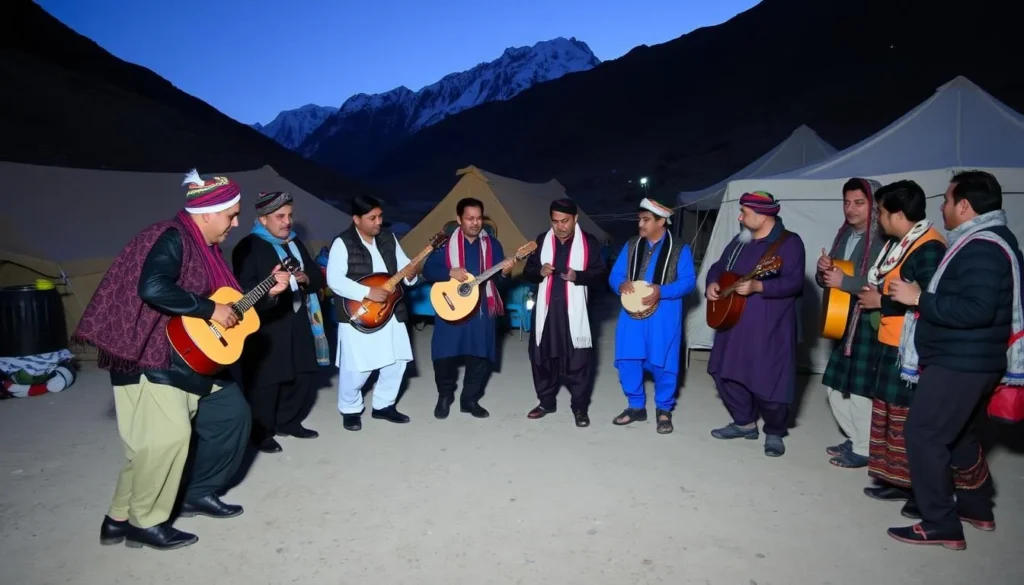
Traditional Balti music and dance performance by porters at Paiju camp
Environmental Responsibility
The Concordia region is a fragile high-altitude ecosystem that requires protection:
- Follow “Leave No Trace” principles rigorously
- Pack out all trash (including toilet paper)
- Use designated toilet facilities at camps
- Minimize use of wet wipes and non-biodegradable items
- Stay on established trails to prevent erosion
- Never collect plants, rocks, or other natural items
Many trekking companies now organize cleanup initiatives; consider participating or supporting these efforts.
Frequently Asked Questions About Concordia Trek
Here are answers to some of the most common questions about trekking to Concordia and exploring this remarkable region.
How difficult is the Concordia trek?
The Concordia trek is rated as strenuous due to the extended length of time spent at high altitudes, challenging terrain, and basic living conditions. While it doesn’t require technical climbing skills, trekkers should have previous multi-day trekking experience and be in excellent physical condition. The main challenges include:
- Extended time above 4,000m altitude
- Walking on uneven glacial terrain
- Long trekking days (5-8 hours)
- Basic camping conditions
- Potential for extreme weather
With proper preparation and acclimatization, the trek is achievable for fit and determined trekkers.
Can I trek to Concordia independently without a guide?
No, independent trekking to Concordia is not permitted for foreign visitors. Pakistan requires all foreign trekkers in the Baltoro region to:
- Obtain special trekking permits
- Be accompanied by a licensed Pakistani guide
- Book through a registered Pakistani tour operator
These regulations exist for safety reasons and to ensure proper management of this sensitive region. Additionally, the logistical challenges of food, equipment transport, and navigation make independent trekking impractical even if it were allowed.
What is the food like on the Concordia trek?
The quality of food on the Concordia trek is surprisingly good considering the remote location. Experienced trek cooks prepare a variety of meals:
- Breakfast: Typically includes porridge, eggs, pancakes, chapati, toast, jam, honey, and tea/coffee
- Lunch: Usually a hot meal at camp or packed lunch on longer trekking days, including soup, sandwiches, eggs, cheese, and dried fruits
- Dinner: Starts with soup, followed by main courses that may include pasta, rice, potatoes, lentils, and occasionally meat (chicken or mutton), with fruit or pudding for dessert
- Snacks: Cookies, chocolate, nuts, and hot drinks are typically available between meals
Most tour operators can accommodate vegetarian, vegan, and other dietary requirements if notified in advance.
Is it safe to travel to Pakistan for the Concordia trek?
The Gilgit-Baltistan region where Concordia is located is generally considered safe for tourists and has a long history of hosting international trekkers. This region operates semi-autonomously from the rest of Pakistan and has different security dynamics.
Key safety considerations:
- The trekking route itself is remote and far from any areas with security concerns
- Local communities in the region depend on tourism and are very welcoming to visitors
- Tour operators maintain close relationships with local authorities
- Pakistan has made significant efforts to improve security for tourists in recent years
As with any international travel, it’s advisable to check your government’s latest travel advisories, register with your embassy in Pakistan, and book through reputable tour operators with good safety records.
What are the bathroom facilities like on the trek?
Bathroom facilities on the Concordia trek are basic but functional:
- Most established campsites have simple toilet tents with a hole in the ground
- Better tour operators provide toilet tents with portable toilet seats
- Privacy is maintained with dedicated toilet tents
- Toilet paper must be packed out (bring ziplock bags)
- Hand sanitizer is essential as water for washing is limited
There are no shower facilities on the trek, though some camps like Paiju have small streams where limited washing is possible. Most trekkers use wet wipes for personal hygiene during the trek.
How much does a Concordia trek typically cost?
A typical Concordia trek package costs between ,700-,500 USD per person, depending on the operator, group size, and specific itinerary. This usually includes:
- All transportation within Pakistan (excluding international flights)
- Hotels in Islamabad and Skardu
- All meals during the trek
- Camping equipment (tents, sleeping mats, etc.)
- Guide, cook, and porter services
- Permits and fees
Additional costs to budget for include international flights (0-1,500), travel insurance (0-300), equipment purchases or rentals, tips for staff (0-300), and personal expenses.
Experience the Majesty of Concordia
Standing at Concordia, surrounded by the world’s most impressive collection of towering peaks, is a life-changing experience that few travelers will ever have. This remote glacial junction offers not just spectacular views but a profound connection with the raw power and beauty of our planet’s greatest mountain range.
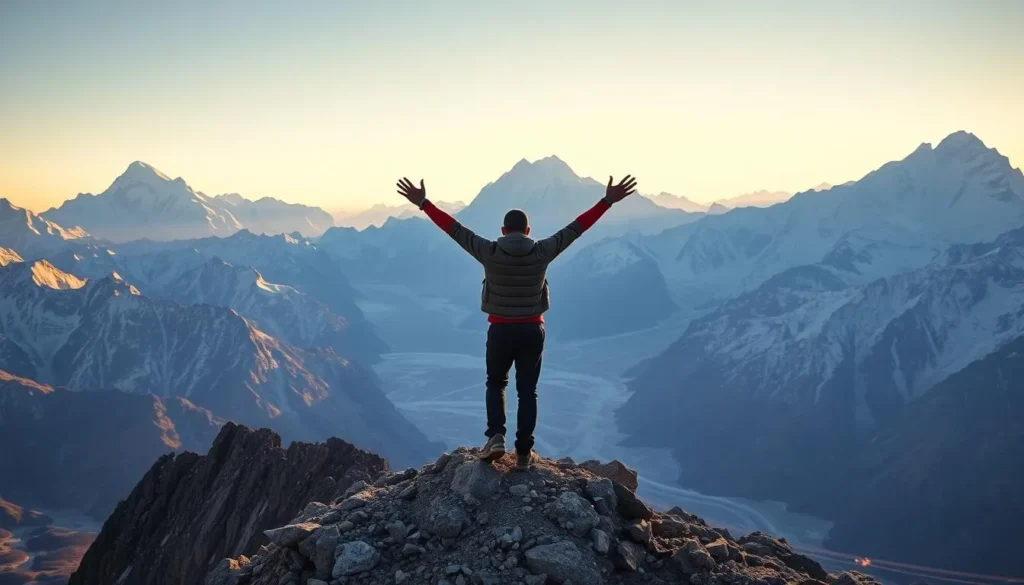
The sense of achievement at reaching Concordia is unparalleled
The journey to Concordia is not easy—it demands physical endurance, mental resilience, and careful preparation. But for those willing to make the effort, the rewards are immeasurable. From the moment you catch your first glimpse of K2’s perfect pyramid to the nights spent beneath the star-filled Karakoram sky, every aspect of this adventure will be etched in your memory forever.
Beyond the natural splendor, the Concordia trek offers something increasingly rare in our connected world: genuine remoteness and the opportunity to disconnect completely from everyday life. Here, far from cell service and internet connections, you’ll find a deeper connection with the mountains, your fellow trekkers, and the remarkable Balti people who make this journey possible.
Whether you’re an experienced trekker seeking your next challenge or an adventurous traveler looking for an extraordinary destination off the beaten path, Concordia represents one of the last great adventures accessible to non-climbers. The “Throne Room of the Mountain Gods” awaits those bold enough to make the journey—will you answer its call?
Ready to Experience Concordia?
Start planning your journey to one of Earth’s most spectacular destinations:
—
The above is subject to change.
Check back often to TRAVEL.COM for the latest travel tips and deals.
